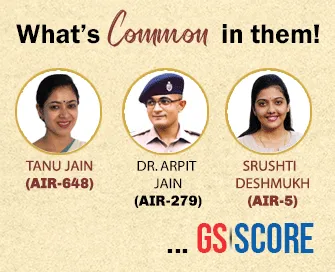

Elections for more than 70 Rajya Sabha seats will be held this year with 69 members set to retire, including 18 from the BJP and 17 from the Congress.
Context
Elections for more than 70 Rajya Sabha seats will be held this year with 69 members set to retire, including 18 from the BJP and 17 from the Congress. With four seats already lying vacant, the total number of vacancies in the Upper House which has to be filled during the year will be 73, according to Rajya Sabha Secretariat data.
About
- The Rajya Sabha (the Upper House of Parliament) is modelled after the House of Lords in the United Kingdom.
- Rajya Sabha is a permanent body and is not subject to dissolution. However, one-third of the members retire every second year and are replaced by newly elected members.
- Each member is elected for a term of six years.
- The Vice President of India is the ex-officio Chairman of Rajya Sabha.
- Composition:
- Article 80 of the Constitution lays down the maximum strength of Rajya Sabha as 250, out of which 12 members are nominated by the President and 238 are representatives of the States and the two Union Territories.
- The Rajya Sabha currently has 245 members including:
- 233 elected members
- 12 nominated
- Nominated members of the Rajya Sabha are picked by the President of India. These MPs are luminaries from the world of economics, sports, literature, art, social service etc.
- The Vice-President is the chairperson of the Rajya Sabha, which is the final stop before a bill is sent for presidential assent.
- Tenure:
- Every Rajya Sabha MP has a tenure of six years and elections to one-third seats are held every two years.
- According to Section 154 of the Representation of the People Act 1951, a member has chosen to fill a casual vacancy will serve for the remainder of his predecessor's term of office.
Formula to elect members:
- While Lok Sabha members are elected directly by the voters, Rajya Sabha members are elected indirectly by the people, that is, by the MLAs.
- Members of a state's Legislative Assembly vote in the Rajya Sabha elections in what is called proportional representation with the single transferable vote (STV) system.
- Each MLA’s vote is counted only once. In this system, MLAs don’t vote for each seat.
- The formula simply is [(Number of MLAs X 100) / (Vacancies + 1)] + 1.
Allocation of Seats
- The Fourth Schedule to the Constitution provides for the allocation of seats to the States and Union Territories in Rajya Sabha.
- How many Rajya Sabha members a state can send, depends on its population.
- Hence, the number of elected seats too changes as states are merged, bifurcated or new ones are created.
- Consequent on the reorganization of States and formation of new States, the number of elected seats in the Rajya Sabha allotted to States and Union Territories has changed from time to time since 1952.
Qualifications
Article 84 of the Constitution lays down the qualifications for membership of Parliament. A person to be qualified for the membership of the Rajya Sabha should possess the following qualifications:
- He must be a citizen of India and make and subscribe before some person authorized in that behalf by the Election Commission an oath or affirmation according to the form set out for the purpose in the Third Schedule to the Constitution;
- He must be not less than 30 years of age;
- He must possess such other qualifications as may be prescribed in that behalf by or under any law made by Parliament.
Disqualifications
Article 102 of the Constitution lays down that a person shall be disqualified for being chosen as, and for being, a member of either House of Parliament
- If he holds any office of profit under the Government of India or the Government of any State, other than an office declared by Parliament by law not to disqualify its holder;
- If he is of unsound mind and stands so declared by a competent court;
- If he is an undischarged insolvent;
- If he is not a citizen of India, or has voluntarily acquired the citizenship of a foreign State, or is under any acknowledgement of allegiance or adherence to a foreign State;
- If he is so disqualified by or under any law made by Parliament.


